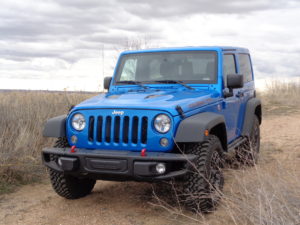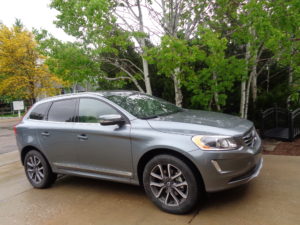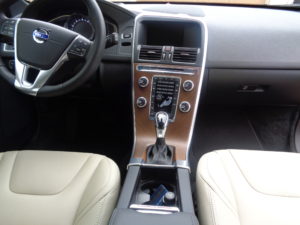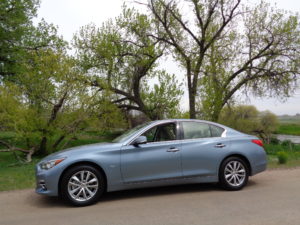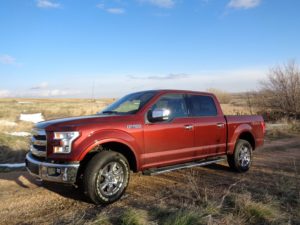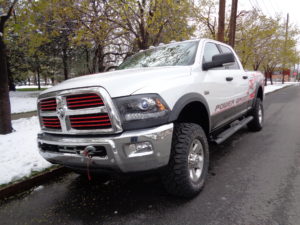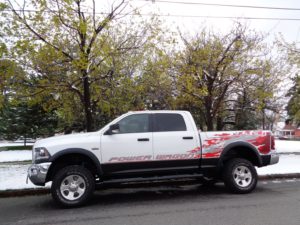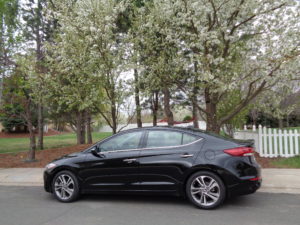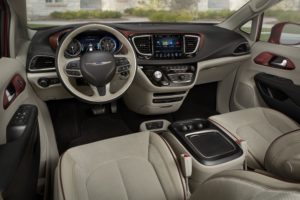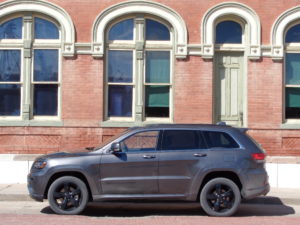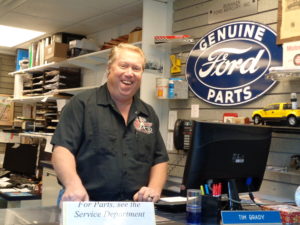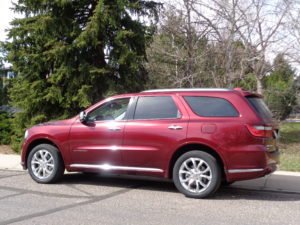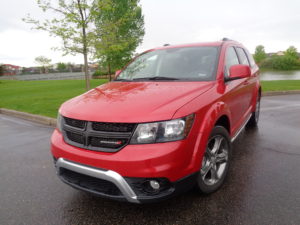
The 2016 Dodge Journey Crossroad Plus all-wheel drive crossover is an alternative which rides in value between the many two-row offerings and the bigger Chevy Traverse and Ford Flex.
The three-row, seven-passenger Journey is a midsizer, and was described as “the Swiss Army Knife of crossovers” eight years ago at its unveiling at the Mile High Station restaurant and events center in Denver.
The Journey has grown in acceptance over the years and today is outsold among Dodge-based vehicles only by the Ram pickup, Grand Caravan minivan and the Charger sedan.
Overall fuel mileage of 19.2 miles per gallon in recent drive time seemed to me a bit below par, yet I looked back to V-6-powered Journeys I’d driven in 2014 and 2013 and their averages were 20.1 and 19.3, respectively, much the same. The 2016 Journey carries an EPA rating of 16/24.
Its 3.6-liter Pentastar V-6, with 283 horsepower, is mated to a 6-speed automatic transmission and all-wheel drive.
Comfortable and supportive are its black leather seats, stitched in white, with sport mesh seat inserts.
Lots of storage bins are carved throughout the interior, including the most cleverly placed beneath the front passenger seat cushion. Integrated child boosters can be raised from second-row seats. The second row can be moved fore and aft and the seatbacks can be reclined. There are in-floor bins, too. Third-row seats can be folded flat for additional cargo space.
The Crossroad Plus AWD edition showed up with sticker price of $34,660. Among its long list of optional equipment are the leather seats and premium door trim, large-screen navigation/audio/backup camera, three-zone temperature control, heated front seats and steering wheel, remote start, satellite radio and Bluetooth.
Side-curtain airbags in all rows, performance suspension, power windows/locks/mirrors, illuminated cupholders and power heated exterior mirrors are among standard items.
Here are the specifications for the ’16 Dodge Journey Crossroad Plus AWD:
- Capacity 7-passenger
- Wheelbase 113.8 inches
- Length 192.4 inches
- Width 72.2 inches
- Height 66.6 inches
- Curb Weight 4,238 pounds
- Track 61.8 inches front, 62.3 rear
- Ground Clearance 7.4 inches
- Turn Circle 39 feet
- Drivetrain All-wheel-drive
- Engine 3.6-liter V-6
- Horsepower/Torque 283/260
- Transmission 6-speed automatic
- Steering hydraulic rack/pinion
- Suspension MacPherson strut front, multilink rear
- Fuel mileage estimate 16/24
- Fuel mileage average 19.2
- Fuel Tank 21.1 gallons, regular unleaded
- Wheels 19-inch
- Tires Kumho Solus 225/55R19
- Cargo Volume 39.6 cubic feet
- Warranty 3 years/36,000 miles basic, 5/100,000 powertrain
Competitors Hyundai Santa Fe Limited, Chevrolet Traverse, Ford Flex
Assembly Plant Toluca, Mexico
Parts Content U.S./Canadian 29%, Mexico 62%
Base Price of Lowest Model $20,995; Base Price of Review Model $29,795; Destination Charge $995; Sticker Price $34,660.
